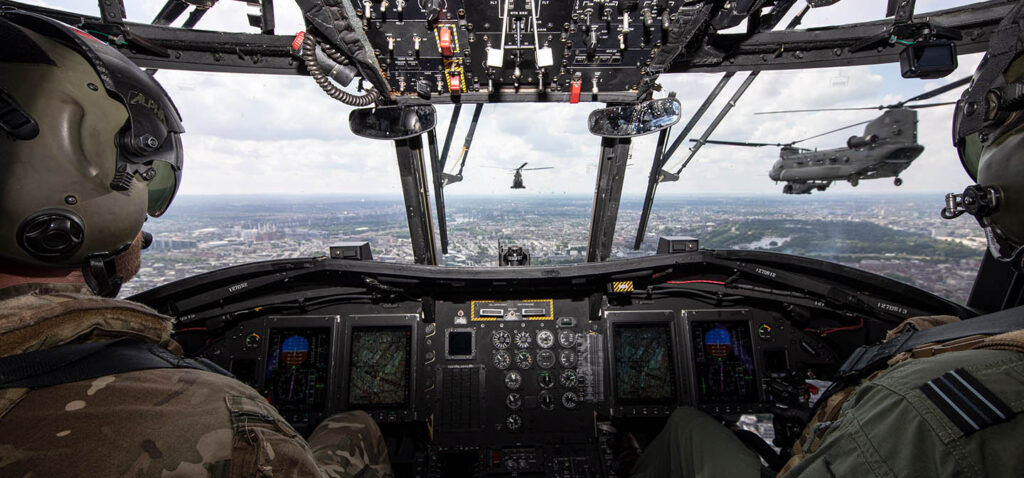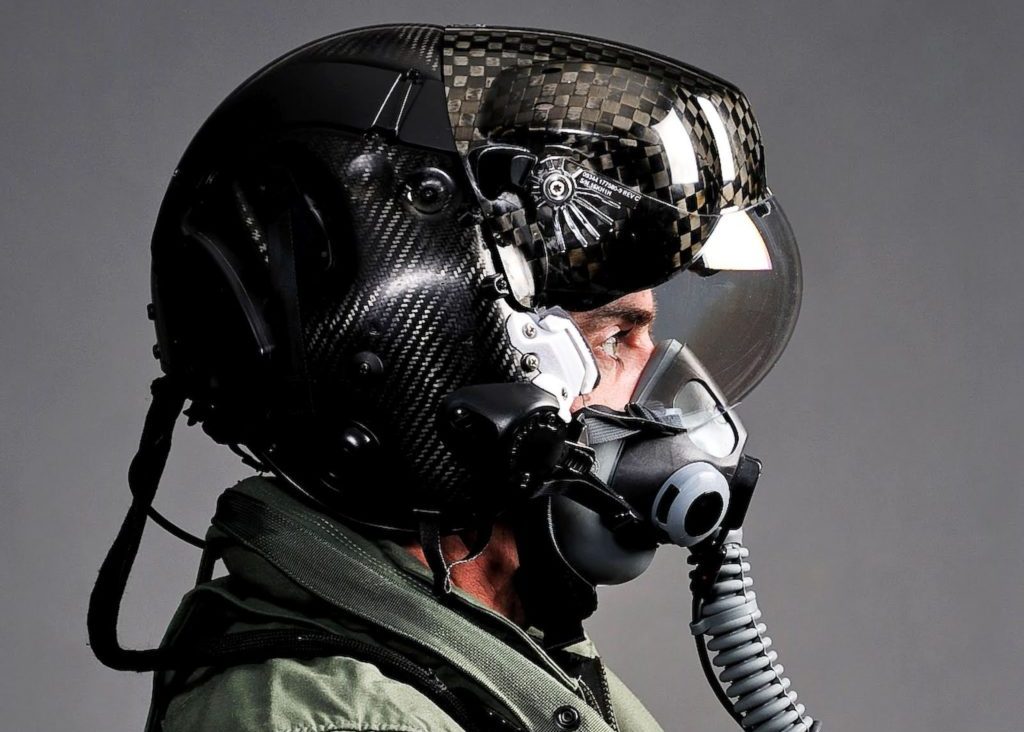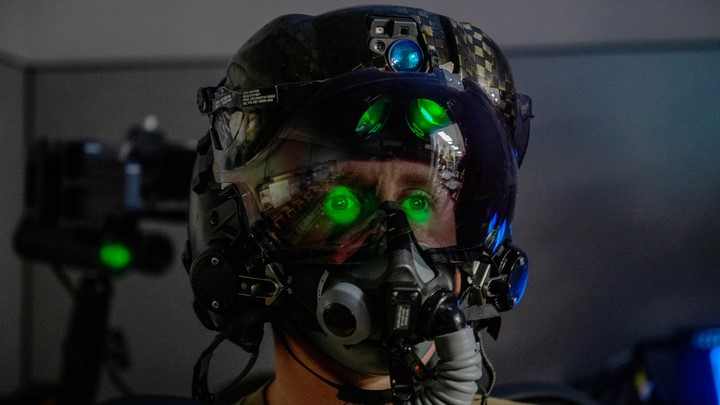The Royal Air Force (RAF) has specific eyesight requirements for pilots. Your spectacle or contact lens correction must not be greater than -7 dioptres or +8 dioptres in any meridian.
An applicant may be assessed as fit with hypermetropia not exceeding +5.0 dioptres, myopia not exceeding -6.0 dioptres, astigmatism not exceeding 2.0 dioptres, and anisometropia not exceeding 2.0 dioptres.
If you have impaired colour perception, it won’t prevent you from joining the RAF, but it may limit the roles you can choose. These standards ensure that pilots have the visual acuity necessary for the demands of their role.
Why is good eyesight important for RAF pilots?

Good eyesight is of paramount importance for RAF pilots for several reasons
Visual Navigation
Pilots rely heavily on their vision for navigation. They need to be able to identify landmarks, read instruments, and spot other aircraft quickly and accurately. Any impairment in vision can lead to errors in these tasks, which can have serious consequences.
Safety
Safety is a top priority in aviation. Pilots with good eyesight are better equipped to handle emergencies, such as engine failures or adverse weather conditions, where quick and accurate visual assessments are critical.
Efficiency
Good eyesight contributes to the overall efficiency of flight operations. It allows pilots to spot potential issues early, navigate more accurately, and make better decisions, all of which contribute to smoother and safer flights.
Selection Process
The RAF has stringent eyesight requirements because they can afford to be selective. With many applicants for each pilot position, the RAF can choose those with the best vision, ensuring that their pilots are well-equipped for the demands of the role.
Role Demands
The demands of a pilot’s role in the RAF are high. They may be required to fly at high speeds, at low altitudes, or in combat situations. Each of these scenarios places additional demands on a pilot’s vision.
What Are the Minimum Vision Standards for Different Roles in the RAF?
The RAF has set minimum vision standards for different roles, and these are determined by RAF medical staff. For example, the role of WSOp requires 6/24 uncorrected vision in each eye.
However, both eyes ultimately do need to be correctable to 6/6. These standards are in place to ensure that all RAF personnel can perform their duties effectively and safely.
Specific Criteria for Visual Acuity and Color Vision
Visual acuity refers to the clarity or sharpness of vision, which is vital for pilots. The RAF requires a certain standard of visual acuity, with or without correction.
For color vision, if you have impaired color perception (color blindness), it won’t prevent you from joining the RAF, but it may limit what roles you can choose. This is because certain roles may require the ability to distinguish between different colors accurately.
How Does the Medical Examination Process for RAF Pilots Work?
The medical examination process for RAF pilots involves a comprehensive health assessment to ensure that you are medically fit for military duty.
This includes hearing and eyesight tests, and they’ll also investigate any illnesses you may have suffered in the past. The health assessment includes a medical examination by one of their contracted medical examiners.
Depending upon the findings of your medical examination, the examiner may decide that further information is required regarding one or more conditions that you have disclosed before a decision on your medical fitness can be reached.
This process is designed to ensure that all RAF personnel are physically and mentally fit for service.
What Are the Eligibility Criteria for Becoming a Pilot in the RAF?
The eligibility criteria for becoming a pilot in the Royal Air Force (RAF) are quite specific and are designed to ensure that only the most suitable candidates are selected.
These criteria encompass a range of factors, including age, health, education, nationality, and commitment to service.
Age and Health Requirements
The RAF has set age limits for aspiring pilots. The minimum age to apply is 17-and-a-half years old, and you must start Phase One training at RAF Cranwell before your 24th birthday. This ensures that pilots are of an age where they can handle the physical and mental demands of the role.
In terms of health, candidates must meet certain fitness criteria and pass a fitness test. This includes a range of physical assessments to ensure that candidates are in good health and capable of withstanding the physical demands of being a pilot.
Additionally, candidates must be able to swim, as this is a necessary skill for survival in emergency situations.
Factors That May Impact Eligibility
Several factors can impact a candidate’s eligibility to become a pilot in the RAF. These include educational qualifications, nationality, and commitment to service.
Educational qualifications are important as they indicate a candidate’s ability to learn and understand the complex systems and procedures involved in flying an aircraft.
Candidates must have GCSEs at Grade C/4 or Scottish National 5 at Grade C in English Language, Maths, and at least three other subjects. They must also have at least 2 A2 Levels/3 Highers at Grade C or above (excluding General Studies, Critical Thinking, or Citizenship Studies), which must total a minimum of 64 UCAS points.
Nationality is also a factor, with candidates required to be a citizen of the United Kingdom or holder of dual UK/other nationality. This is likely due to security and loyalty considerations.
Finally, candidates must commit to a minimum of 12 years of service. This reflects the significant investment in time and resources that the RAF makes in training its pilots.
What steps can be taken to meet and sustain RAF pilot eyesight requirements?

To meet and sustain the Royal Air Force (RAF) pilot eyesight requirements, you can consider the following steps:
Eye Check-ups: Make sure to have your eyes checked regularly by an eye doctor to keep track of your eye health and vision sharpness.
Balanced Diet and Exercise: Eating foods rich in vitamins A, C, and E, and minerals like Copper and Zinc can help maintain good eye health. Regular physical activity can also contribute to overall well-being, which can positively affect your vision.
Eye Protection: Shield your eyes from harmful UV rays by wearing sunglasses when needed. Try to limit activities that can strain your eyes, such as prolonged screen time.
Use of Corrective Lenses: If your vision falls short of the RAF standards, glasses or contact lenses might be an option. But remember, the correction for your glasses or contact lenses must not exceed -7 dioptres or +8 dioptres in any meridian.
Eye Exercises: Some eye exercises may help enhance visual sharpness, but always consult an eye care professional before starting any new exercise regimen.
FAQ
Can I join the RAF if I wear glasses?
Yes, you can join the RAF if you wear glasses, but it depends on your prescription. Some sources suggest that you cannot join the RAF as a pilot or aircrew if you wear glasses. It’s best to contact the RAF or a recruiter for the most accurate information.
Can you be a fighter pilot with glasses?
Yes, you can be a fighter pilot with glasses. Pilots who require glasses are expected to follow guidelines outlined in their medical certificate. For example, in most countries, pilots with glasses must always carry an extra pair in case of emergencies.
Can I be an Air Force pilot if I wear glasses?
Yes, you can be an Air Force pilot with glasses. However, you are required to have 20/30 nearsighted vision without correction. The farsighted vision requirements for pilots in the Air Force is 20/70, which can be corrected to 20/20 with contact lenses or glasses.
Is 2040 vision good?
20/40 vision is less sharp than 20/20 vision, but it’s not considered bad. It means you can see at 20 feet what a person with normal vision can see at 40 feet.
Is 2.50 eyesight bad?
The numbers on an eye prescription indicate the correction needed. Positive numbers correct farsightedness, while negative numbers correct shortsightedness. A larger number suggests a stronger prescription.
Is 3 eyesight bad?
If the number is positive, it indicates farsightedness, and if it’s negative, it indicates shortsightedness. A larger absolute value indicates a stronger prescription. So, a prescription of +3.00 or -3.00 is considered moderate.
Is 4.5 vision bad?
A prescription of -4.5 is considered moderate myopia (nearsightedness). This means you can see things up close clearly, but distant objects appear blurry.
Can 1.75 eyesight be cured?
Currently, there is no cure for myopia (nearsightedness). However, vision can be corrected with glasses, contact lenses, or LASIK surgery.
Is 1.0 vision good?
In the decimal system of measuring visual acuity, 1.0 or 100% is considered average vision. A value above 1.0 indicates sharper than average vision.
What does 1.50 eyesight mean?
A prescription of 1.50 typically indicates a mild level of farsightedness.
Final words
Being a pilot in the Royal Air Force needs good eyesight. This is important for safety and doing the job well. Regular eye checks, healthy living, and taking care of your eyes can help keep your vision sharp.
But remember, good eyesight is just one of the things you need to become a pilot in the RAF. It’s a tough path, but for those who make it, it’s the start of an amazing career. Always talk to a health expert for advice that fits your situation.

